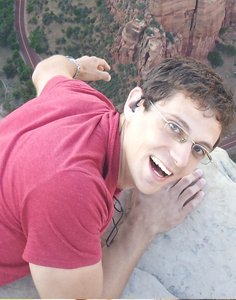
Ido was born in Haifa and studied in the Hebrew Reali School. He is a third-generation Technion alumni – both his parents and his grandfather are Technion graduates. Ido is a graduate of the Technion Excellence Program, receiving his Bachelor in Electrical Engineering and Physics as part of the Psagot Atuda Program. He was granted the Knesset award for outstanding undergraduate student achievements in 2007.
Ido completed his PhD degree in the Physics Department under the supervision of Distinguished University Professor Moti Segev. In his dissertation he discovered new classes of accelerating beams in nonlinear optics and electromagnetism, for which he received the 2012 Israel Physical Society prize awarded to one graduate student in theoretical physics every year. Ido’s doctoral studies were carried out at the same as his army service as an intelligence officer with the Israeli Defense Force.
In the beginning of 2014, Ido moved with his spouse Miriam Farber to live on the banks of the Charles River in Boston and to start their studies in MIT. Currently he is a postdoctoral fellow in MIT working in the group of Prof. Marin Soljačić in the Department of Physics and the Research Laboratory of Electronics (RLE). Ido is the recipient of the Marie Curie International Outgoing Fellowship for the project “Beam Shaping in Complex Systems”. For the first year of the postdoctoral studies he is a Rothschild fellow, and starting in 2015, Ido will be supported by the Technion-MIT Fellowship.
His research in MIT includes several projects at the intersection of optics, electromagnetism, and quantum mechanics. One interesting direction of his research involves engineering the quantum wavefunction of electrons, which has promising applications in electron microscopy. This work is part of a bigger effort to study both theoretically and experimentally how nanophotonic structures influence the dynamics of electrons and other charge carriers. The outcome of these studies can lead to novel physical phenomena such as new types of radiation, coherent x-ray sources, and improved detectors for high-energy physics experiments.
